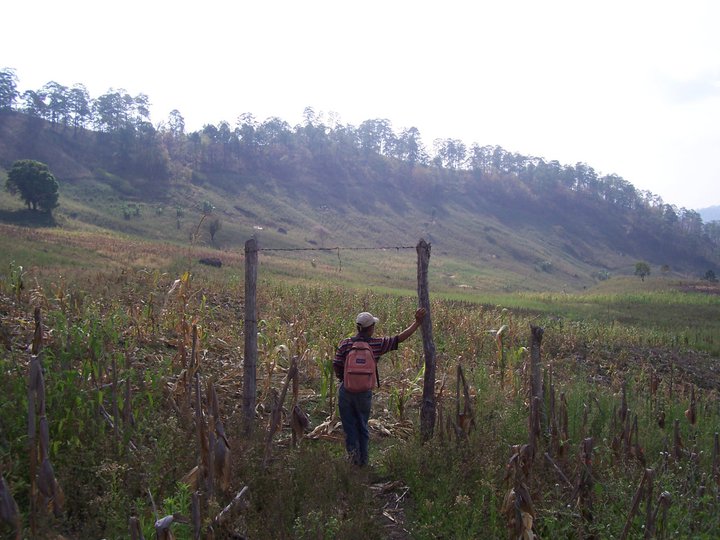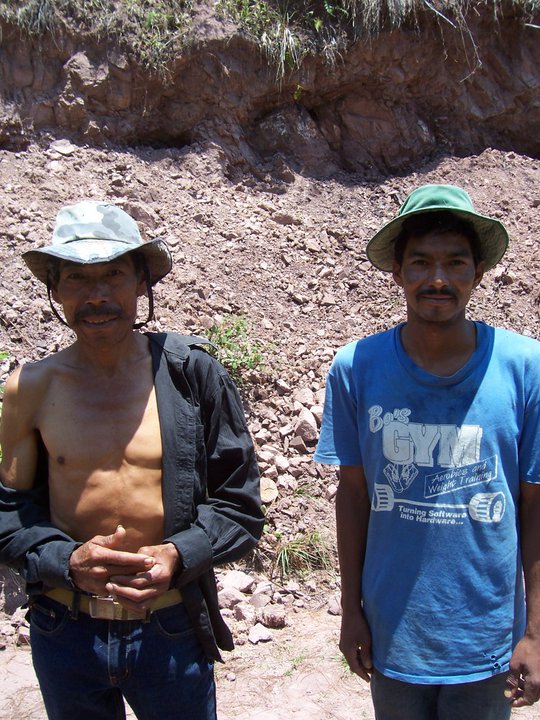During his service as a Peace Corps member, the author lived for two years in a remote 600 person Honduran village without electricity.
During my Peace Corps Service in Honduras I organized a small project to test the drinking water of the communities that surround my village. I got another Peace Corps Volunteer (whose specialty was water systems management), a few representatives from the municipality, and a sixteen year old kid from my village to transport us in his family’s pick-up truck. Each village water board – a group of volunteers charged with maintaining the water system – sent a few representatives to lead us to their system’s water source. Other than the kid not actually knowing how to drive (I had to teach him); we completed the project without a hitch.

I learned what the relationship looks like between tree cover, soil, and water: I learned what desertification looks like. Of the seven water sources we visited, only two were within forests. The other five were hidden in small stands of trees and they were drying out.
The other volunteer explained that rain seeps into mountains; percolates, collects, and then trickles out, pouring like magic from of what appears to be small hole in the ground or crack in a stone. These trickles keep much of the planet alive. Wells work under a similar principle; you just have to dig them up. On mountains, and especially in Honduras, trees help make the trickles possible: they shade the ground and cool the air as well as keep soil from washing away.


Without tree cover, the ground gets hot and stays hot, and essentially cooks the water out. Since one or even dozen treeless mountains don’t stop seasonal rains, eventually the unprotected soil will wash away. (What is a place with little to no ground water, few if any flora, and no arable soil?) Ultimately, the water source will dry up Trees can be replanted, and eventually (hopefully), the source or another nearby will be renewed. A mountain forest regulates temperature and collects water.
The other volunteer was relatively new to her site so I’d occasionally translate for her. At one point she was struggling to a take measurement, and suddenly stopped then sighed quietly. She looked out over the barren hills that surrounded us and down at the hard light brown soil beneath our feet. “I don’t know what do to here….” She said in English. Her words dissipated in the heat. We were tired, it was late, and the sun was baking our backs.
One of men from the local water board spoke up. He explained that people from his village had been cutting trees for firewood and using the land they cut to grow beans, corn, and some coffee. Everyone knew they shouldn’t do it, but they needed wood to cook food. He said that more water used to come out, and even some children were becoming sick after drinking the water, “what can we do?” he asked.
The other volunteer was silent for awhile, “there’s nothing they can do; they can leave,” she finally said to me in English. I translated and the men nodded. “You can buy water.” I added. “There’s not enough water here to sustain your population, and the water source is not going to magically return. This was your choice; but you may be able to correct it.”
We then talked about other reasons the trees were cleared: to grow beans, corn, and coffee. Many Honduran farmers grow the ancient Mesoamerican staples of beans and corn. They sell most but keep some to eat. Coffee grows best in the shade (under other trees), though it will produce beans quicker without shade, but the plant will not live as long nor grow a quality bean. Some farmers manage their farms well and plant rows of grasses and a few trees to keep their soil from draining away, but many do not. As they lose the soil that supports their farms they’re forced to purchase more chemical fertilizers, which seep down with the rain, causing sickness. If enough soil drains away the farm is abandoned.
Once abandoned, grasses will slowly retake the area, and over the course of many, many years, the soil will be replenished and trees may start to grow again. Understanding the relationship between trees, soil, and farming is imperative. The United Nations has pledged to fight soil degradation, and recently launched the Global Soil Partnership for Food Security and Climate Change Mitigation and Adaptation as part of its Natural Resources and Environment Department. Many Honduran cities are surrounded by barren mountains, and these also have drinking water problems. Cities throughout Latin America and the Caribbean face water shortages and drinkability issues. Planners can work with farmers and politicians to create policies and programs to sustainably manage the land that are locally supported and generated. Many organizations exist throughout Latin America that give away tree seed and will help manage integration with active farming. Better land and farm management can save lives. It is a choice.
Written by Daniel Brooks. To view the original posting click here









